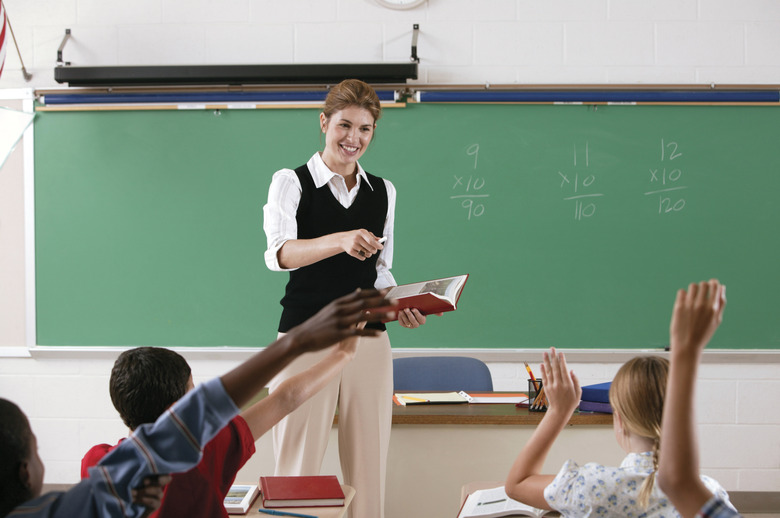Goals & Objectives For Sixth-Grade Math
Sixth-grade math students master basic operations, such as multiplying and dividing rational numbers, fractions and decimals. They should understand pre-algebra concepts, such as solving for single variables, and know how to use ratios and rates to compare data. Goals center on students' ability to solve equations, calculate probability, estimate, measure two- and three-dimensional figures and understand relationships between numbers.
Calculations and Operations
Calculations and Operations
Sixth-graders perform computations that involve adding, subtracting, dividing and multiplying whole numbers, mixed numbers, negative numbers, fractions, decimals and percentiles, according to the University of Chicago. Students should have a keen understanding of place value, expanded notation, greatest common factor, least common multiplier and equivalencies. They learn to make reasonable estimates and use ratios and proportions to solve problems. A primary goal for sixth-graders is to be able to perform complex mathematical operations with and without calculators.
Data Analysis and Probability
Data Analysis and Probability
Students should learn to assess and organize mathematical data to make predictions and draw conclusions, often involving the interpretation of graphs and charts. Sixth-graders must be able to recognize groups, clusters, peaks and symmetry, according to the Common Core State Standards Initiative. Mean, median and mode calculations and the ability to understand variability are essential to effective data analysis. The goal is for students to be able to make informed decisions based on statistical analysis and probability factors.
Geometry and Measurement
Geometry and Measurement
Sixth-grade students learn to sort, classify and measure two- and three-dimensional figures, such as triangles, quadrilaterals, cubes, prisms and pyramids, according to the Virginia Department of Education. They learn to compute distance, area and volume and report their answers using accurate terms, such as miles, square miles or cubic feet. Mastering sixth-grade geometry includes measuring angles, identifying congruent figures and drawing examples of reflections, translations and rotations. The aim is for students to deepen their knowledge of geometric measurements and visually represent those measurements using drawings and graphs.
Basic Algebra, Patterns and Functions
Basic Algebra, Patterns and Functions
Middle school students get their first heavy dose of algebra in sixth grade. They create and interpret numeric patterns, solve linear equations and understand algebraic notations, such as using letters to represent unknown variables. They must learn to write and solve equations with two variables, such as 12x + y = 155 when x = 10 and y = 35. Sixth-graders read patterns in tables and coordinate graphs of numeric (x, y) data. They learn to calculate average speed and solve algebraic word problems involving rate, time and distance.
Cite This Article
MLA
Tucker, Kristine. "Goals & Objectives For Sixth-Grade Math" sciencing.com, https://www.sciencing.com/goals-objectives-6th-grade-math-7927664/. 24 April 2017.
APA
Tucker, Kristine. (2017, April 24). Goals & Objectives For Sixth-Grade Math. sciencing.com. Retrieved from https://www.sciencing.com/goals-objectives-6th-grade-math-7927664/
Chicago
Tucker, Kristine. Goals & Objectives For Sixth-Grade Math last modified August 30, 2022. https://www.sciencing.com/goals-objectives-6th-grade-math-7927664/
